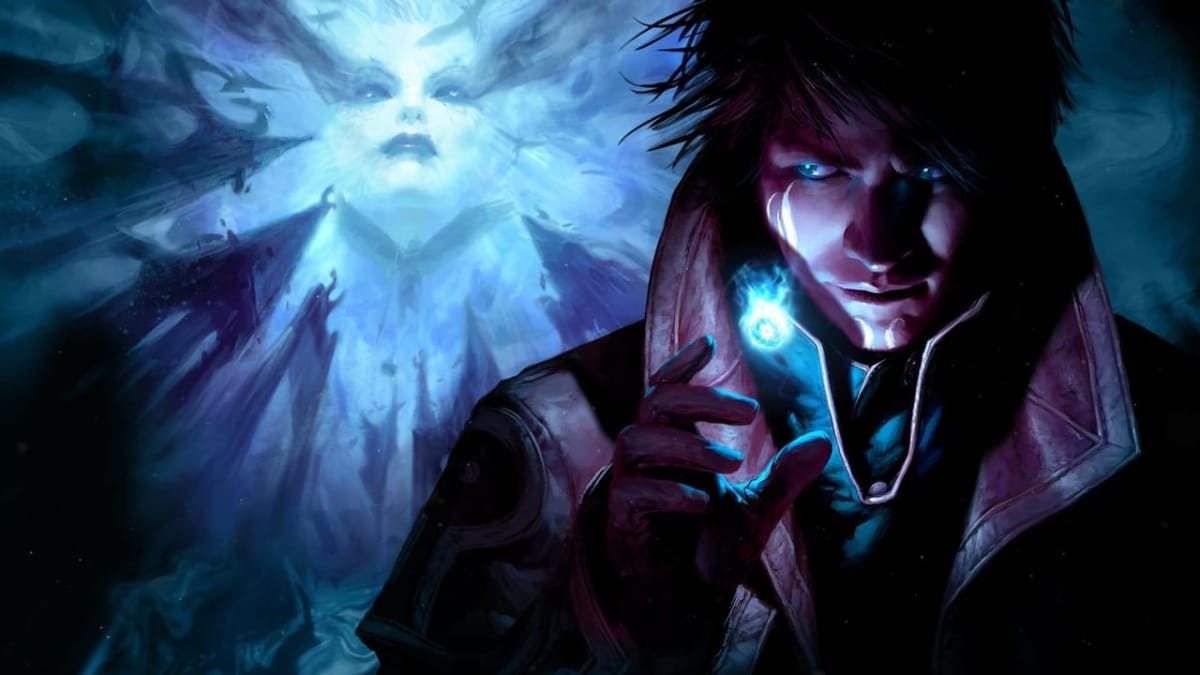Shadows Over Innistrad is the first set in the Shadows Over Innistrad block, Wizards of the Coast’s return to the much-beloved world of Innistrad. Released on April 08, 2016, this set started the second block in the new Magic: The Gathering block format, in which blocks would consist of two sets, not three, and Standard rotation would happen on a much more frequent basis. To see what we thought of the previous block, check out our reviews for Battle for Zendikar and Oath of the Gatewatch.
Today, TechRaptor will be taking a look back at Shadows Over Innistrad from a competitive standpoint, looking at how well the set performed in the Limited Draft and Sealed formats, and looking at what contributions the set made to Standard and the non-rotating formats of Modern, Legacy, and Vintage. We’ll also be looking at Shadows Over Innistrad from a setting viewpoint, seeing how well it carried on the original Innistrad‘s flavor and themes.
Avacyn's jubilant return after the events of Avacyn Restored is unfortunately short-lived, as she and other Innistrad angels are slowly corrupted and driven mad, slaughtering the very humans they were created to protect. The Cursemute, which allowed werewolves to exist peacefully as wolfir, is undone and the uncontrollable transformations into mindless monsters once again threatens the land. Among this, Jace Beleren of the newly-formed Gatewatch searches for the vampiric Planeswalker Sorin Markov while investigating the horrors and madness that have begun to spread across the plane; Sorin, having been charged by his comrade Ugin the Spirit Dragon to find the missing lithomancer Nahiri, returns to his ancestral home of Markov Manor only to find its inhabitants frozen in stone.
Unlike the ill-received Battle for Zendikar block, Shadows Over Innistrad has much of the original charm and feeling that the original Innistrad block had. The gothic-horror inspirations behind the Innistrad block are felt very strongly thoughout Shadows Over Innistrad, and while there aren't that many cards reprinted from Innistrad (of the fifteen reprinted cards, only Dead Weight, Gloomwidow, Mad Prophet, and Unruly Mob had printings in Innistrad), the cards that are reprinted are all flavorful and contribute to the setting. The plot of Shadows Over Innistrad is engaging and gripping, and while some might groan at seeing Jace show up as a set protagonist again, he actually has good characterization in this set's story and isn't overly focused on to the exclusion of other story characters.

That isn't to say that the story is by any means perfect. Eagle-eyed players noticed that Tamiyo's quotes on the Clue tokens weren't the same in different languages and as a result were able to discover and solve a puzzle from Wizards of the Coast; the solution was a quote from Ugin, reminding players that "they (the Eldrazi Titans) came in three." This pointed at the only remaining Eldrazi Titan, Emrakul, being somehow involved in the plot of Shadows Over Innistrad and resulted in a months-long debate over whether this puzzle solution was a red herring from Wizards of the Coast. Many also expressed worry that if Emrakul was involved, the possibility existed that she would suffer the same unsatisfying fate as Ulamog and Kozilek did in the Battle for Zendikar block.
Shadows Over Innistrad touches on two mechanics seen in previous sets, Madness—originally from Torment and last seen in Time Spiral—and Transform, the much-beloved double-faced card mechanic from the Innistrad block. Fight, an evergreen keyword action introduced in Innistrad, also makes a limited appearance on Dissension in the Ranks. Unfortunately, most of the Innistrad block's other mechanics—Flashback, Morbid, Miracle, Undying, and Soulbound—don't make any appearances, but Transform and Madness are so well-designed in this set that players aren't left feeling like the set isn't a part of Innistrad, or that they were only included to appease players.
Three new mechanics are introduced in Shadows Over Innistrad: Delirium (additional effects if four or more card types are among cards in your graveyard), Investigate (create a colorless Clue token that can be sacrificed alongside paying two generic mana to draw a card), and Skulk (the creature that bares it can't be blocked by creatures with greater power), all of which are well-supported at all card rarities, and occupy range of developmental niches. In addition to being both well-designed and well-supported, these mechanics are also very flavorful, tying into the setting and themes of Shadows Over Innistrad and the Innistrad plane as a whole.
Because these mechanics are well-supported, it means that there are many archetypes to build around in the Limited formats. Green/White Humans, White/Blue Spirits, Red/Green Werewolves, Black/Green Delirium, Red/Black Vampires, and Blue/Black Zombies are all archetypes that we saw in the Limited formats, each very strong and capable of being built around even when missing certain key cards. As a result, the Limited formats had amazing replayability; each Draft or Sealed event is just as much fun as the last, and players never feel bored or unsatisfied when taking part in these format games.

In Standard, cards from Shadows Over Innistrad played a key role in defining the meta. As Khans of Tarkir and Fate Reforged rotated out with the release of this new set, the three- and four-color decks that had become viable thanks to fetch lands and Battle for Zendikar's ally-colored "battle lands" disappeared into the aether, leaving a massive gap to be filled either by cards from the Battle for Zendikar block or by cards from Shadows Over Innistrad, and as we can clearly see, it was Shadows Over Innistrad that proved the victor in claiming the throne that was left vacant. Archangel Avacyn fulfills multiple rolls, Flashing in to protect your side of the board from your opponent and razing everything to the ground when needed. Declaration in Stone provides affordable removal and can even remove multiple targets if the opponent has multiple creatures of the same name on their side of the battlefield.
The one thing I didn't really enjoy seeing was this set's allied-color cycle of dual lands of Port Town, Choked Estuary, Foreboding Ruins, Game Trail, and Fortified Village (also known as the "shadow lands"). Between the allied-color battle lands and enemy-color man lands from Battle for Zendikar, I think that Standard is over-saturated with land options and Research and Development could have considered skipping a rare land cycle for this set. Additionally, the shadow lands don't really have a thematic tie to the mechanics or focuses of Shadows Over Innistrad, and I feel that some interesting design space opportunities were lost.
Green/White Humans (which later evolved into Green/White/Blue, or Bant, Humans in Eldritch Moon) was far and away the strongest deck to emerge from Shadows Over Innistrad, and while other archetypes such as Red/Black Vampires and Red/Green Werewolves were still viable, in Standard,they were mostly regulated to Friday Night Magic and other semi-competitive events. However, the fact that so many Limited archetypes were still usable in Constructed shows how strong Shadows Over Innistrad is.
Even Modern got some interesting cards to play with. Nahiri, the Harbinger brought new life to the Jeskai Control shell, making it a top-tier contender for players to consider both playing with and playing against in the format. Thing in the Ice is an interesting card with a lot of design space and while decks bearing it haven't broken into the Modern meta just yet, its only a matter of time until strong deck brewers find a deck that supports it.
Defining cards: Shadows Over Innistrad is a strong set both in terms of design and flavor, and as a result, there are many defining cards in this set, in addition to cards that have already been listed. Arlinn Kord isn't the first double-faced Planeswalker in Magic: The Gathering, but she is the first one to be designed with abilities that let her flip between both sides of her card and as such explores not only the design space of double-faced cards, but Planeswalkers as well. Delver of Secrets gets a nod in Aberrant Researcher, which is also an interesting way to provide fuel for Delirum-based decks while also providing pressure on the opponent. Anguished Unmaking represents the penultimate scene of the set, in which Sorin, having no other options or recourse, unmakes the beloved protector of his plane ... and unknowingly completes Nahiri's machinations and sets the stage for Eldritch Moon.
Bottom line: Shadows Over Innistrad is a remarkably designed set that not only captures and expands upon what made the original Innistrad block enjoyable, but also includes its own creative directions; as a result, Shadows Over Innistrad has strong replayability and is very immersive in its lore and story. The set had very strong and enjoyable Limited formats and made multiple contributions to Standard that led to a variety of archetypes being accessible to players. In Modern, Nahiri completely revitalized the derelict Jeskai Control deck, turning it into a Tier 1 threat. I highly recommend gathering up some friends and hosting a Draft or Sealed event yourself, as even two sets later playing Shadows Over Innistrad Limited is still as much fun as it was when it first released.
The author of this review participated in Shadows Over Innistrad drafts, Magic: The Gathering pre-release events, Standard format competitions and purchased Shadows Over Innistrad product at his local game store.
Review Summary
Shadows Over Innistrad is a remarkably designed set that not only captures and expands upon what made the original Innistrad block enjoyable but also introduces its own visions and lore, and as a result is very fun in terms of both playability and immersibility.
(Review Policy)Pros
- Well-designed and supported mechanics
- Strong presence in multiple formats
- Consistent and engaging plotlines
Cons
- Possible Eldrazi influence too soon after Battle for Zendikar
- Unnecessary "shadow land" cycle
Have a tip, or want to point out something we missed? Leave a Comment or e-mail us at tips@techraptor.net













